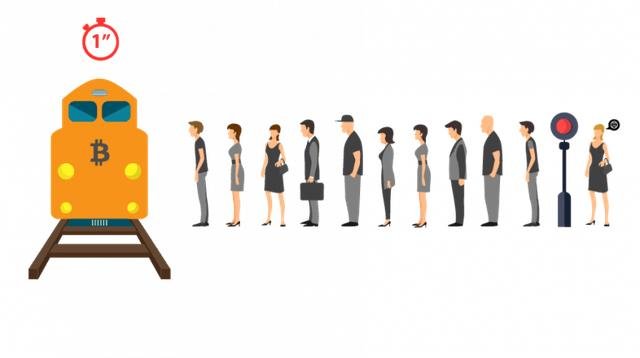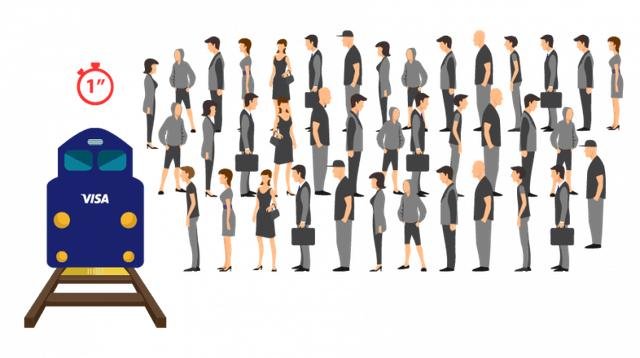The blockchain that has been so popular has a fatal flaw...
The biggest problem with blockchain and how to solve it, illustrated.
(WeChat ID: ilieyun) March 25 report (compiled: tian xiaoxue)
At this stage, we can use a simple analogy to describe the biggest problem of the block chain platform.
Back in the early 2000s, the Internet was very slow and very expensive. To solve these two problems, people began to improve the infrastructure and design of the Internet, hoping to enjoy the convenience brought by the Internet to the greatest extent. At the same time, they are also developing better hardware to run some of the more important Internet elements.
Then, the speed of the Internet has increased, and the cost of accessing the site has declined. Previously, developers had to create a single web page, but with infrastructure optimizations, they were able to create big sites like Facebook. In short, the Internet is fast and scalable.
Now, the blockchain has encountered the same problem: slow speed and high cost. At present, each company in this field is trying to provide the infrastructure that can realize scale expansion, hoping that the block chain platform can become the mainstream of the industry in the future. By then, the technology and related platforms can be used not only to pay, but also to develop applications like Google and Facebook.
&
To explain the capacity of scale expansion, we need to explain the concept of throughput first.
Suppose you're at the train station now, and the train comes every hour, with only ten people in it. In other words, the eleventh person must wait for the next one. We use the passenger in this case to represent the transaction. On average, the better-known blockchain platforms handle 10 transactions per second.
By contrast, payments companies such as Visa, which currently deal with the average speed of transactions, are about 5,000 to 8,000 pens per second. And the processing speed of the transaction is what we call the throughput here. Therefore, the current throughput of the block chain platform is far from the mainstream payment platform.
Now, let's switch to another hypothesis. It was the same station, with 100 passengers waiting to get on the bus. After the bus came, the conductor said that ten people who could make the highest bid could get on the bus. You are in a hurry, so you choose to pay a large sum of money to buy your ticket and get on the bus.
In other words, due to the low throughput of the block chain platform, transaction costs have been increased accordingly. For example, in the current situation, a $10 transaction costs about $2.
Thus, slow speed and high cost are the biggest obstacles on the block chain.
Improve the ability of scale expansion.
To get the recognition, the block chain platform needs to be scaled up. Specifically, various blockchain companies have proposed the following possible solutions.
(1) expanding the size of the block.
The first, and most direct, is to expand the scope of the block.
If you still take the bus as an example, increase the number of seats on the bus, for example, from 10 to 20. As a result, trains can take more passengers on a trip to relieve the congestion.
Back to the block chain, at this stage, the size of the bitcoin block is about 1MB per block. If the number is increased to 2MB per block, the number of transactions that can be processed per second will double. That is, the larger the block, the more transactions per second.
But this is a theory, and it's a problem.
Block chain technology and enterprise Zilliqa technical director Yaoqi Jia explained: "if you put the block size from each block 1 MB extend to each block 1 gb, then the problem is that when you create a block, also need to send it to others in the same network. If you choose to send it with Google, the uploaded file must be very large, and Google will not be happy. Again, the Internet can't handle such large files quickly. Therefore, it is a problem to enlarge the block scale. There is still a limit to how big the scale is.
(2) immediate payment solution.
The second approach is to use instant payments, such as Lightning networks for bitcoins, Raiden networks for the Ethernet, and Trinity networks for small ant currency Neo.
Under existing conditions, each transaction is subject to the approval of each node in the network. A node is a computer that runs a transaction processing algorithm.
For example, if within a month, every day you go to the same coffee shop for $1 to buy coffee, so the total amount of $1 transaction cost is very high, actually it is a burden for the entire network.
In this case, you should make an agreement with the coffee shop owner to pay $1 worth of tokens each day. After a month, the owner can exchange 30 tokens for $30 on the Internet. You can send your own trades on the Internet in the first and last day. And the reason why they're called instant payments is because these are private agreements.
Of course, the system is flawed. Because the entire process is centralized, the servers that support these instant payment transactions are deployed.
Finally, if this solution is really adopted, then security and transparency are also issues that have to be addressed.
(3) the delegated consensus algorithm.
As already mentioned, the speed of the transaction of blockchain network is so slow, mainly because every node in the network needs to deal with specific transactions. So, let's say that there are now 1,000 nodes in the network, and that transaction would have to go through the 1,000 computers in order to do that.
It's like, if you want to make a final decision, you need to ask 1,000 people for permission. Not only will the process be tedious, it will be tedious. But if you can pick 10 people as a representative, specify the group manager, let them vote, it would be more convenient, we want to reach a consensus also is relatively easy, the entire process will be worth a lot.
Also, you can specify a small number of nodes to run relevant protocols and agree on transactions that need to be processed. The approval of these nodes represents the common view of all computers in the network.
At this stage, most of the blockchain projects that can be scaled up have chosen to use such a delegate protocol. In order to enter a representative group composed of a few people, the relevant members need to introduce their own interests, and they also need to do some specific tests, which are often referred to as certificates of interest. If you pass the test and become a member of the delegation, you will get a certificate of your own, proving that you really can represent the views of the larger community.
(4) sharding technology solutions.
The so-called sharding technology solution is a kind of chain trading method, which divides the whole website into numerous shards.
In fact, in the database realm, this is not a new concept, mainly refers to the database partition table. Specifically, the database is divided into numerous data shards, smaller, faster, and easier to manage.
Before that, however, the concept had never existed in the block chain until Loi Luu and Prateek Saxena and their team formally introduced it in the research paper Elastico. Saxena is an assistant professor of computing at the national university of Singapore and chief scientific adviser to Zilliqa. Luu is also a consultant to Zilliqa, a former PhD student at the national university of Singapore.
The solution that Zilliqa provides is network sharding. We also want to give an example of how it works in detail.
Let's say you are a student and you have 10 people in the classroom. Two or two groups, complete assigned tasks. In the end, the teacher got five ingredients and integrated the answers, then passed all the information to 10 students. In this way, each group can know the tasks and the approximate completion of the other groups. But at the time, each group was working independently and had no knowledge of the other groups.
That is, each student is a node, and five groups are five. The teacher represents the directory service committee and is itself a sharding. If the same scenario in currency trading, it means that every student go through each step of problem solving, there is no integration of division of labor, so take longer, are more demanding.
If there are 10,000 nodes, then there are 10 groups randomly assigned to a particular process, each of which is a separate piece.
Each segment then deals with different transactions, eventually forming a set of transactions recognized by all shards, and submitting them to the directory services committee, which is also independent. The committee is responsible for integrating different pieces of information and generating a larger final block. All the information in this ultimate block will be returned to the various sub-groups.
future
In the near future, Zilliqa will launch its own blockchain system and smart contract platform. By then, each application can run smoothly on the block chain.
"If you compare the blockchain to an operating system, we want Zilliqa to be Android or iOS so that everyone can simply use and develop applications," Jia said. In the long run, we will provide a blockchain platform that can be scaled up. At the same time, we will continue to study and continue to send articles to support the further development of the blockchain industry.
This article from the cloud network hunting, if reproduced, please indicate the source: http://www.lieyunwang.com/archives/423433
The artificial intelligence industry summit will be held on April 17 at the greater China Hilton Hotel in shenzhen. Here is the deepest thought, the most valuable investment advice, and the coolest black technology showcase.



For future viewers: price of bitcoin at the moment of posting is 8515.40USD